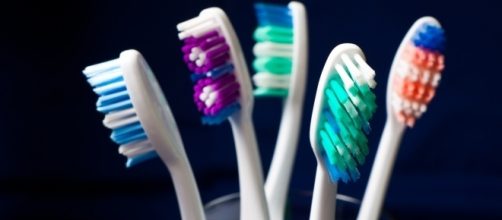A toothbrush is something everybody uses every day, or at least they should be using it. Few people know their Toothbrush could make them sick if certain measures are not taken. According to researchers, there can be as many as 1.2 million bacteria on a used toothbrush.
Dentist's recommendations
Your Dentist might tell you a lot of things about your Teeth and toothbrushes. However, they might not have you everything you need to know. What most dentists might tell you is to use a soft toothbrush because hard bristles irritate their tender gums and damage the enamel on their teeth.
At the end of a visit, some dentists will give their patients a new soft toothbrush.
Mistakes people make
Many people use their toothbrushes too long. They have a lifespan of about 3 months and should be thrown out after that time, according to the American Dental Association. While most people don't record when they start using a new toothbrush, there is a quick and easy way to always know when it is time to throw it away.
There are usually two colors on the bristles. After the shelf life has expired, one of the colors would have faded into the other color. That indicates that it is time to use a new toothbrush.
The shelf life of a toothbrush changes if you get sick. There is warning on the packages of Colgate and Arm & Hammer toothbrushes to change them more often if you get sick.
Anytime you get sick with a cold or other illness, change your toothbrush as soon as you get well even if it is still within the three-month time period.
Advice from dentists
Do not keep your wet toothbrush covered. It should be allowed to air dry between uses. Bacteria will grow very fast on a wet toothbrush after use. In that case, every time you brush your teeth, you will be brushing bacteria back on them.
Keeping your toothbrush uncovered is an excellent idea, but make sure it is not near the toilet. Every time the toilet is flushed, tiny particles that are airborne land on your toothbrush. Therefore, it is wise to keep it at least 6 feet away from the toilet. It is better to keep it uncovered in a medicine cabinet.
Make sure you rinse your toothbrush thoroughly after every use.
To give your brush a real good rinsing, run tap water and give it a real good rinsing to get rid of any toothpaste and debris that might be left on the brush.
Disinfect your toothbrush by soaking it in Listerine or another mouthwash for at least several minutes every day. This can be omitted if you use a toothbrush sanitizer.
Do not share your toothbrush, not even in an emergency. If you or someone else does not have a toothbrush, put toothpaste on a paper towel and run it across your teeth. When you share someone's toothbrush, both of you could end up sick.
If you keep more than one brush in the same container, do not let the heads touch each other. If so, germs from one brush will get on the other brushes.
Use a toothbrush holder to prevent brushes from touching.
Try not to let your toothbrush touch the tip of the toothpaste tube. Bacteria will be left on the toothpaste. The next person who uses the toothpaste will pick up the germs. Just as you wouldn't share toothbrushes, try not to share toothpaste either.


